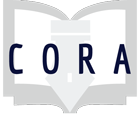Short Description:
For this activity students are asked to imagine that they are organizing a party, specifically a scholarly party. Groups are given a starting article that they evaluate and use as a jumping off point for choosing a theme for their party and finding more sources. Their theme acts as an early version of a research question. Following citations backwards and forwards groups invite other scholars who would have relevant things to say about their theme. Students also assess gaps in their invite list and identify other scholars from different perspectives or discipline who should also be invited.
Learning Outcomes:
By the end of the session, students will be able to: - evaluate the benefits of thinking of scholarship as a conversation - use appropriate criteria in order evaluate individual sources and search results in their own research projects - use effective techniques to narrow a topic and select appropriate databases and publications in order to conduct effective and efficient searches in their own research projects - evaluate the utility of source evaluation criteria and search techniques from this activity
Course Context (e.g. how it was implemented or integrated):
This activity was originally designed for a first year University Studies seminar class.
Additional Instructor Resources (e.g. in-class activities, worksheets, scaffolding applications, supplemental modules, further readings, etc.):
The lesson plan, activity worksheet and assessment questions are included as Google Doc links that can be copied or downloaded in your preferred file format. These works by Ryer Banta are licensed under a Creative Commons Attribution 4.0 International License.
Potential Pitfalls and Teaching Tips:
Tips on adapting the activity: There are a few sections that you will need to add some relevant local information and directions to. I have comments on each of these that require these additions. Tips for choosing starting articles: Since I designed this activity for first year students and with them I've had most success giving all groups the same starting article. I choose an open access source that is well cited, but not too old. I also tried to find one that was broadly interesting to them and the subject of the course. It is also possible to choose several different sources that explore narrow aspects of a broad topic. For example, the broad topic could be 'wind energy', and sources could range from public perception, to engineering, to wildlife management, and more. Tips for facilitating the activity and timing: This activity as written will typically take groups about 20 minutes, though it can seem tight, especially if they are not used to doing much group work. So make sure to keep the groups moving along. Make sure you have enough time to debrief. Cut or streamline some sections of the activity if you need to save time, or focus students on some parts more than others. Some groups try to divide up the steps of the activity, but each step is really meant to build on the previous.

